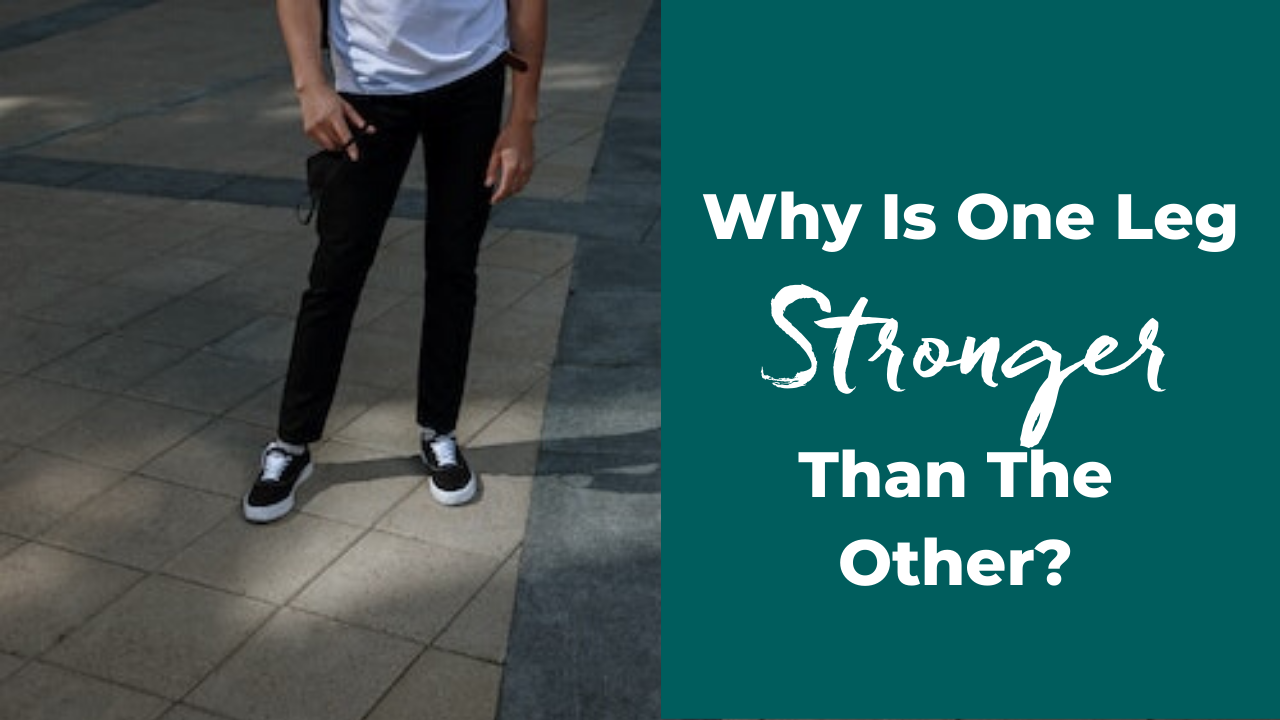
Why Is One Leg Stronger Than the Other?
Jul 22, 2020Have you ever paid attention to the way you're standing while waiting for the subway to arrive or the dog to finish sniffing the yard? If you have, then you've noticed that most of us carry our body weight more on one foot than the other. We repetitively stand on one leg and the other leg rests without much weight on it.
Due to the fact that you might have been doing this for years now, the two sides of the body have developed differently. One foot might bigger. One leg has better balance because you stand on it more often. The other has more mobility because you use it more to reach for something, like a high step or stepping over a puddle.
In my case, my right foot has a slight bunion and a fallen arch because I haven't been putting weight on it, hence neglecting it for many years. How mean of me!
This asymmetrical habit causes a ripple effect in the body. Do you doubt that a barely noticeable habit like that can cause such a pronounced asymmetry in the body? Sorry, my friend, but it's true. It works like the compound effect. Think about how many minutes over how many years you spent with this habit.
It can cause your pelvis to be out of alignment, or maybe it happened the other way round: you habitually carry more weight on one foot because your pelvis is out of alignment. With habits that have lasted years, if not decades, it's hard to say which one came first. Was it the chicken or the egg? Luckily it doesn't matter so much. We'll work on both. Let's start with your feet and legs.
Related: Pilates for Plantar Fasciitis
My job allows me to have an array of exercises at my disposal that can correct that. But I'm a busy lady, and I always love saving time. So, in addition to doing a few great foot strengthening exercises, I will try to make it a habit to stand on both of my feet, and distribute my body weight evenly between the two. This is a new - and better - habit that can correct my imbalance without spending any extra time on a workout.
When you get tired (believe it or not, this will make your muscles tired), you will habitually shift the weight back onto your strong leg. Catch yourself doing that and either balance your weight between both feet or switch to the weaker leg instead.
The most difficult part is probably to remember to do it. In his book Atomic Habits, author James Clear recommends habit linking. This means you link a habit or action you're already doing to the new habit you'd like to establish. For example, each time you stand in line at the grocery store, you remember to balance your weight on both your feet. It might take a few times to remember to start the habit, but you'll see after just a few grocery store visits, you'll do it automatically. This way you have 5-10 minutes of leg strengthening exercises without ever stepping one foot (ha!) into the studio.
Ready to Teach Pilates with Clarity and Confidence?
Join my weekly email newsletter. It's jam-packed with more articles, videos, exercise tutorials and teaching tips.
Only super valuable stuff here. No spam ever. Unsubscribe any time.










